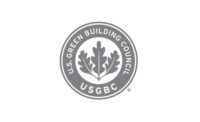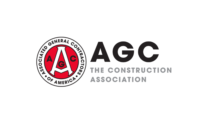The U.S. Green Building Council (USGBC), released a new report, LEED in Motion: Residential, showing the growing green trends in the homes market. The report reveals that green, LEED-certified homes have grown 19 percent since 2017 and are at an all-time high with nearly 500,000 single family, multifamily and affordable housing LEED-certified units globally and more than 400,000 units located in the U.S.
"One of the most important investments a person will make is in their home, and the quality of these spaces can have a direct impact on an individual's health and well-being," said Mahesh Ramanujam, president and CEO, USGBC. "As an industry, we want to find ways to raise everyone's living standard, so we need to prioritize the construction and remodeling of homes so that they are not only environmentally friendly, but they also have the power to improve the quality of life for all human beings."
The report also outlines the top 10 states for LEED certified homes in the U.S., with California coming in at number one. California is home to nearly 40,000 certified residential units, followed by Texas with more than 24,500. LEED, or Leadership in Energy and Environmental Design, is the most widely used green building rating system in the world. LEED certification is available for virtually all building types as well as single-family homes, neighborhoods, cities and communities.
On average, LEED-certified homes use 20 to 30 percent less energy than a traditional home, with some home owners reporting up to 60 percent savings. In addition to minimizing energy, waste and water, certified homes are designed to support human health and comfort. The U.S. Environmental Protection Agency (EPA) estimates Americans spend about 90 percent of their time indoors where pollutants can be two to five times more concentrated than outdoors. LEED encourages design that maximizes indoor fresh air and uses materials that help reduce exposure to toxins and pollutants connected to asthma, allergies and other respiratory issues. The top states for LEED green homes include:
Top 10 States for LEED-certified Residential Units
Rank │State│ Number of Certified Residential Units│Gross Square Footage of Space
- CA 39,296 46,252,746
- TX 24,598 41,425,633
- NY 10,876 12,700,343
- WA 10,521 11,856,316
- CO 8,091 9,870,268
- NJ 7,646 8,790,645
- OH 7,402 9,755,348
- OR 6,729 7,961,683
- MD 5,966 9,019,059
- GA 5,891 7,299,589
While homebuilders and buyers may feel intimidated by the current housing market, green homes can provide a sound investment opportunity. They can be built for the same cost - and sometimes less - than conventional homes; sell at higher prices and faster; require less maintenance; and improve energy and water efficiency, which can lower utility bills. Nationwide, the annual energy bill is more than $2,000 and places a disproportionate burden on low-income residents. LEED is a tool for economic development and has been used by policymakers to guide affordable housing development. Currently, there are more than 78,000 residential units that qualify as affordable housing and are participating in LEED.
"It can be difficult to see why prioritizing a green home is important, but the environmental and personal health outcomes are very real," added Ramanujam. "Our own research tells us people understand reducing waste, conserving energy and water, and limiting our carbon footprint are important, but it can feel too daunting. By building and buying green homes we make those actions easier to do, while also creating a healthier, more sustainable environment for ourselves and future generations."
Looking ahead, construction of green multifamily and single-family homes will continue to grow through 2022 and LEED plays an important role in verifying that progress and activity. To help keep pace with changing trends and technologies, in April, USGBC opened registration for LEED v4.1 Residential, the latest version of the rating system. Builders can learn more about LEED and review the certification resources online to get started.






